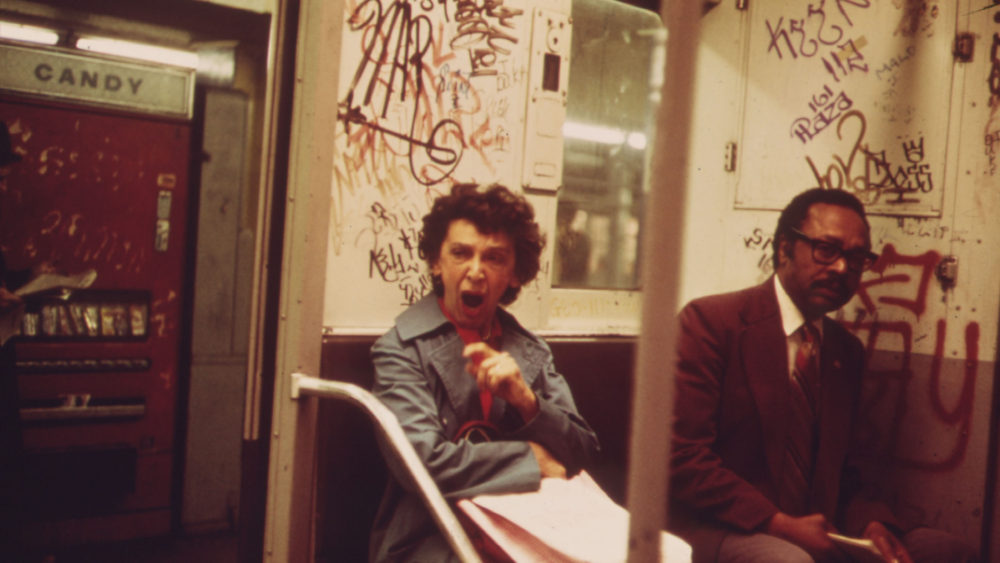
Warren K. Leffler, Demonstrators opposed to the ERA in front of the White House, 1977, via Library of Congress.
Introduction
While many Americans in the 1970s continued to celebrate the political and cultural achievements of the previous decade, a more anxious, conservative mood grew across the nation. For some, the United States had not gone nearly far enough to promote greater social equality; for others, the nation had gone too far, unfairly trampling the rights of one group to promote the selfish needs of another. Onto these brewing dissatisfactions the 1970s dumped the divisive remnants of a failed war, the country’s greatest political scandal, and an intractable economic crisis. As the following sources lay bare, it seemed as if the nation was ready to unravel.
Documents
1. Report of the National Advisory Commission on Civil Disorders (1968)
Riots rocked American cities in the mid-late sixties. Hundreds died, thousands were injured, and thousands of buildings were destroyed. Many communities never recovered. In 1967, devastating riots, particularly in Detroit, Michigan, and Newark, New Jersey, captivated national television audiences. President Lyndon Johnson appointed an 11-person commission, chaired by Illinois Governor Otto Kerner, to explain the origins of the riots and recommend policies to prevent them in the future.
2. Statement by John Kerry of Vietnam Veterans Against the War (1971)
On April 23, 1971, a young Vietnam veteran named John Kerry spoke on behalf of the Vietnam Veterans Against the War before the Senate Committee of Foreign Relations. Kerry, later a Massachusetts Senator and 2004 presidential contender, articulated a growing disenchantment with the Vietnam War and delivered a blistering indictment of the reasoning behind its prosecution.
3. Nixon Announcement of China Visit (1971)
Richard Nixon, who built his political career on anti-communism, worked from the first day of his presidency to normalize relations with the communist People’s Republic of China. In 1971, Richard Nixon announced that he would make an unprecedented visit there to advance American-Chinese relations. Here, he explains his intentions.
4. Barbara Jordan, 1976 Democratic National Convention Keynote Address (1976)
On July 12, 1976, Texas Congresswoman Barbara Jordan delivered the keynote address at the Democratic National Convention. As Americans sensed a fracturing of American life in the 1970s, Jordan called for Americans to commit themselves to a “national community” and the “common good.” Jordan began by noting she was the first Black woman to ever deliver a keynote address at a major party convention and that such a thing would have been almost impossible even a decade earlier.
5. Jimmy Carter, “Crisis of Confidence” (1979)
On July 15, 1979, amid stagnant economic growth, high inflation, and an energy crisis, Jimmy Carter delivered a televised address to the American people. In it, Carter singled out a pervasive “crisis of confidence” preventing the American people from moving the country forward. A year later, Ronald Reagan would frame his optimistic political campaign in stark contrast to the tone of Carter’s speech, which would be remembered, especially by critics, as the “malaise speech.”
6. Gloria Steinem on Equal Rights for Women (1970)
The first Congressional hearing on the equal rights amendment (ERA) was held in 1923, but the push for the amendment stalled until the 1960s, when a revived women’s movement thrust it again into the national consciousness. Congress passed and sent to the states for ratification the ERA on March 22, 1972. But it failed, stalling just three states short of the required three-fourths needed for ratification. Despite popular support for the amendment, activists such as Phyllis Schlafly outmaneuvered the amendment’s supporters. In 1970, author Gloria Steinem argued that such opposition was rooted in outmoded ideas about gender.
7. Native Americans Occupy Alcatraz (1969)
In November 1969, Native American activists occupied Alcatraz Island and held it for nineteen months to bring attention to past injustices and contemporary issues confronting Native Americans, as state in this proclamation, drafted largely by Adam Fortunate Eagle of the Ojibwa Nation.
Media
New York City Subway (1973)

Erik Calonius, “Many Subway Cars in New York City Have Been Spray-Painted by Vandals” 1973. Via National Archives (8464439).
“Stop ERA” Protest (1977)

Warren K. Leffler, Demonstrators opposed to the ERA in front of the White House, 1977, via Library of Congress.
In the 1970s, conservative Americans defeated the Equal Rights Amendment (ERA). With high approval ratings, the ERA–which declared, “Equality of rights under the law shall not be denied or abridged by the United States or any state on account of sex”—seemed destined to pass swiftly through state legislatures and become the Twenty-Seventh Amendment, but conservative opposition stopped the Amendment just short of ratification.